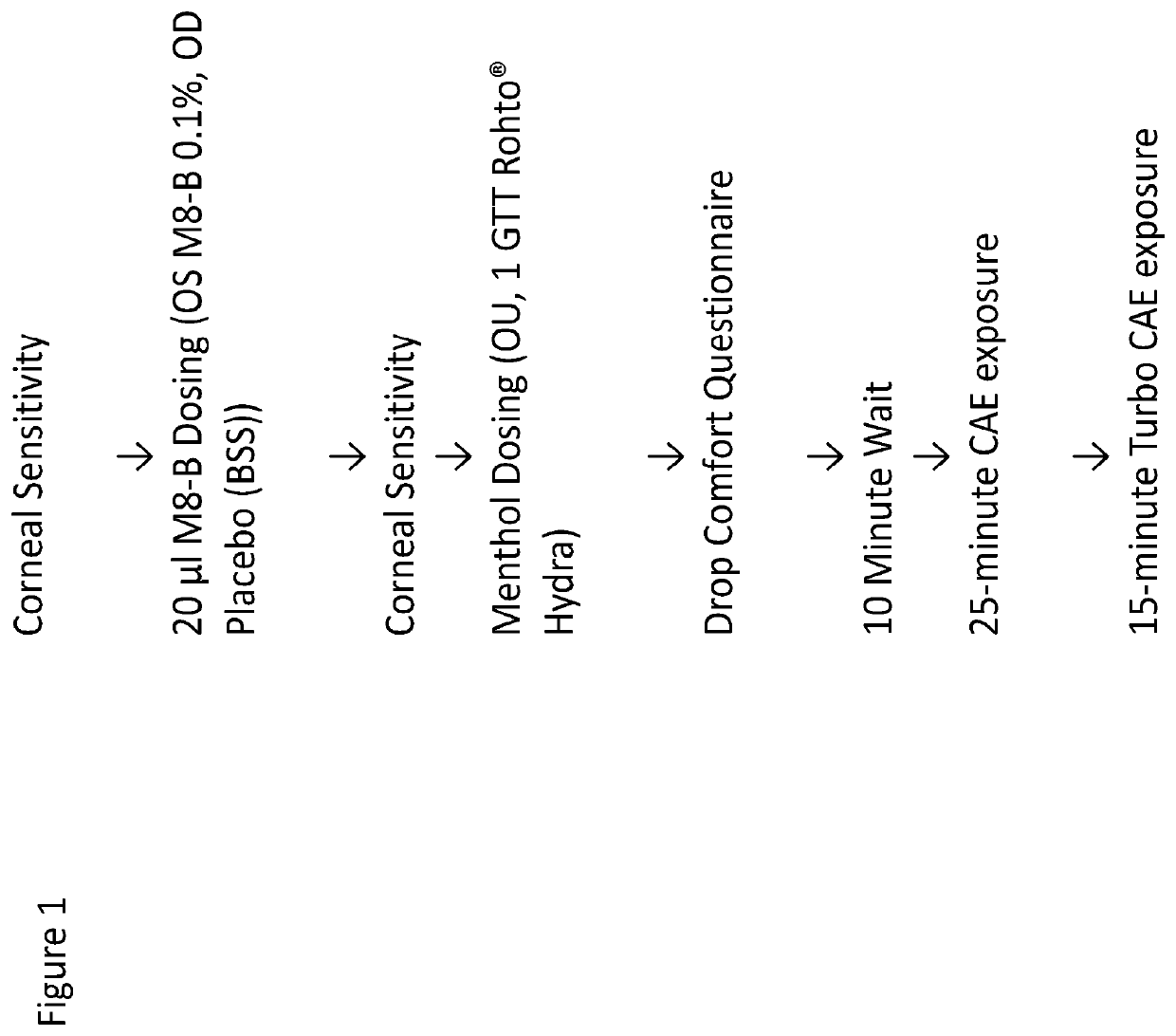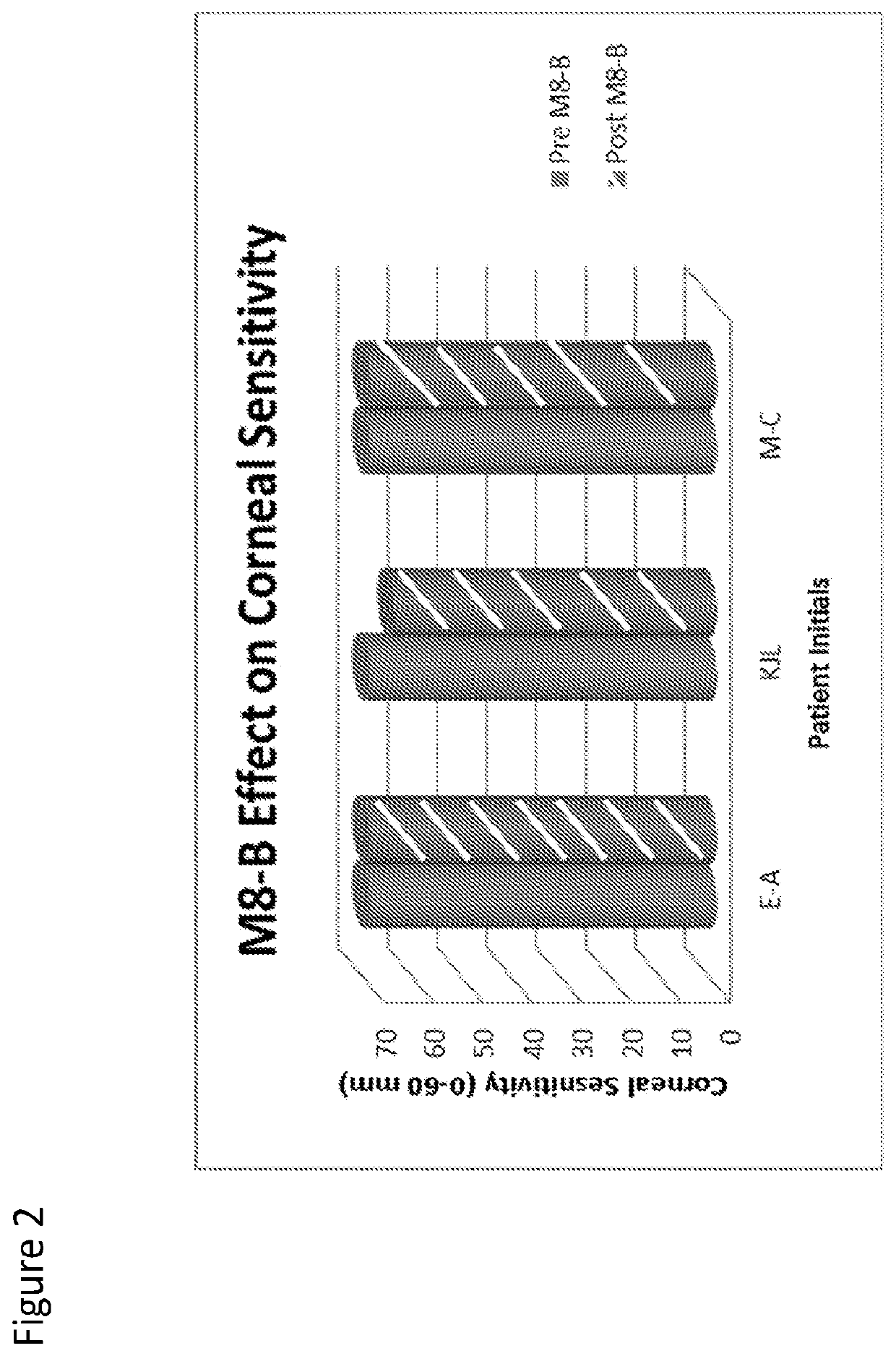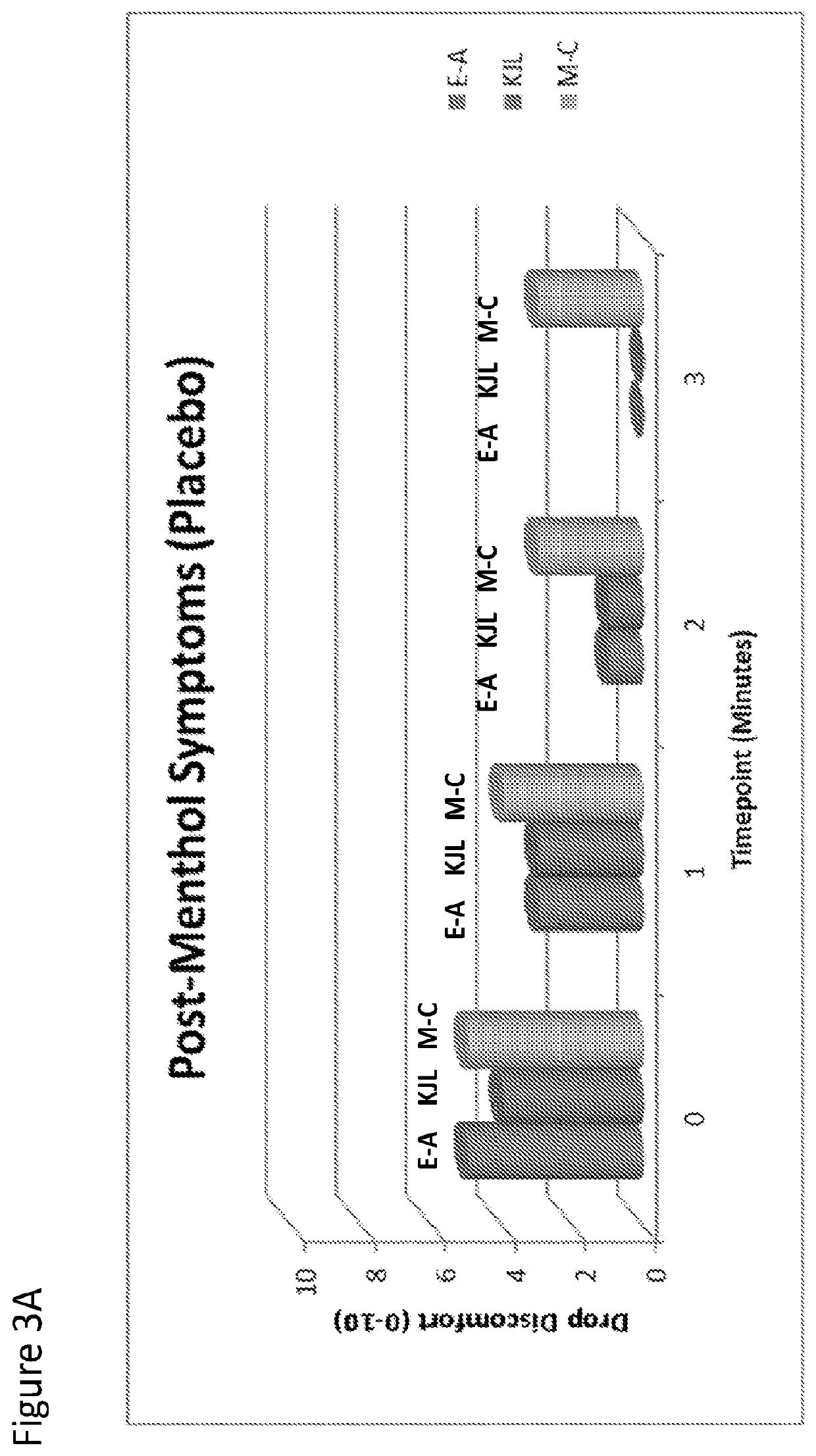Transient receptor potential cation channel subfamily M member 8 (TRPM8) antagonists and methods of use
a technology of transient receptor and cation channel, which is applied in the direction of drug compositions, pharmaceutical delivery mechanisms, medical preparations, etc., can solve the problems of ineffective or variably effective treatment, dry eye, and insufficient tear film protection
- Summary
- Abstract
- Description
- Claims
- Application Information
AI Technical Summary
Problems solved by technology
Method used
Image
Examples
example 1
Compound Ion Corneal Sensitivity
[0112]In a first set of experiments, the effect of Compound I on corneal sensitivity was examined Subjects (shown by initials E-A, KJL, M-C) were dosed with 20 ul of Compound I (0.1%) or a placebo (BSS). As shown in FIG. 2, Compound I had a minimal effect on corneal sensitivity, as measured by a Cochet Bonnet. Subject E-A and M-C had no detectable changes in sensitivity. Subject KJL had a 5 mm degrease in sensitivity (70 mm to 65 mm). No significant difference was found pre- to post-dose (p=0.42).
example 2
Compound I on Post-Menthol Treatment Symptoms
[0113]The effect of topical menthol application after dosing with Compound I or placebo was examined After dosing with Compound I or placebo, 1 drop menthol-containing OTC eyedrop were administered bilaterally (ROHTO Hydra). Menthol is known to act upon TRPM-8 channels, effectively causing neural activity similar in nature to exposure to cold temperature. As such, menthol was used to induce a “cooling” symptom. As shown in FIGS. 3 A and B, Compound I was able to effectively block the action of menthol, by competing for TRPM-8 channels as an antagonist, resulting in diminished subject-reported symptoms (Drop Discomfort, 0-10 scale). The eye treated with Compound I had significantly lower symptom scores than placebo (p<0.01). Baseline (pre-menthol) symptoms were “0” for each eye, for all 3 subjects (data not shown).
example 3
Compound I on Response to a Controlled Adverse Environment (CAE)
[0114]The effect of CAE exposure after dosing with Compound I or placebo was examined After dosing with Compound I or placebo, subjects were exposed to a Controlled Adverse Environment (CAE) for 25 minutes, in order to elicit symptomology similar in nature to dry eye symptoms. An Ocular Discomfort Questionnaire (0-4 scale) was asked every 5 minutes. As shown in FIGS. 4 A and B, the eye treated with Compound I had significantly lower symptom scores than placebo (p<0.01).
[0115]Next, the effect of Turbo-CAE exposure after dosing with Compound I or placebo was examined After 25-minute Controlled Adverse Environment (CAE) exposure, subjects were exposed to 15 minutes of Turbo-CAE, in order to elicit symptomology similar in nature to severe dry eye symptoms. An Ocular Discomfort Questionnaire (0-4 scale) was asked every 5 minutes. As shown in FIGS. 5 A and B, the eye treated with Compound I had significantly lower symptom sco...
PUM
| Property | Measurement | Unit |
|---|---|---|
| time | aaaaa | aaaaa |
| time | aaaaa | aaaaa |
| time | aaaaa | aaaaa |
Abstract
Description
Claims
Application Information
 Login to View More
Login to View More - R&D
- Intellectual Property
- Life Sciences
- Materials
- Tech Scout
- Unparalleled Data Quality
- Higher Quality Content
- 60% Fewer Hallucinations
Browse by: Latest US Patents, China's latest patents, Technical Efficacy Thesaurus, Application Domain, Technology Topic, Popular Technical Reports.
© 2025 PatSnap. All rights reserved.Legal|Privacy policy|Modern Slavery Act Transparency Statement|Sitemap|About US| Contact US: help@patsnap.com



